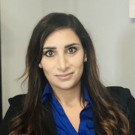
Speakers

Soleman Abu-Bader
Professor and Director of the Doctoral Program
Howard University School of Social Work
Event Summary
On April 11, 2017, the Arab Center Washington DC (ACW) released the findings of the 2016 Arab Opinion Index, a large-scale annual research initiative undertaken by the Arab Center for Research and Policy Studies (ACPRS) in Doha, Qatar. The 2016 Arab Opinion Index is the fifth in a series of surveys conducted by ACPRS, gauging the attitudes of citizens in the Arab world as well as the trends and changes of their opinions over time.
Speakers were Dr. Soleman Abu-Bader, Professor of Social Work at Howard University; Dr. Imad K. Harb, ACW Director of Research; and Dr. Tamara Kharroub, ACW Assistant Director and Senior Analyst.
Dr. Kharroub explained that the 2016 Arab Opinion Index (AOI) surveyed 12 Arab countries: Algeria, Egypt, Iraq, Jordan, Kuwait, Lebanon, Mauritania, Morocco, Palestine, Saudi Arabia, Sudan, and Tunisia. As the largest opinion survey of its kind in the region, the AOI questionnaire was administered to 18,310 respondents who were asked about eight aspects of life in the region: living conditions of Arab citizenry, views of institutions and government effectiveness, attitudes toward democracy, civic and political participation, religion and religiosity in public life, Palestine and intra-Arab relations, Arab public opinion and the “Arab Spring,” and Arab public opinion toward ISIL. She noted that “the Arab Opinion Index is an important component of ACW’s mission to provide a better understanding of the Arab world in the United States and inform the US policy community of Arab perspectives on key current affairs and policy issues in the region.”
Dr. Abu-Bader explained the methodology of the annual survey, saying that the researchers used a randomized, stratified, multistage, self-weighted, and clustered approach. There were 840 trained interviewers, half women and half men, who administered the 35-page survey instrument. The stages of sampling involved dividing each of the 12 countries by their own administrative designations (e.g., governorates), then into urban and rural areas, and finally into lists of families in the urban and rural communities. Demographic characteristics included age, gender, marital status, and education.
Dr. Imad Harb presented some of the highlights of the AOI regarding three themes: respondents’ attitudes regarding democracy, regional and international powers, and the Islamic State. He noted that 77 percent considered democracy to be the most appropriate system of government for their countries, while 56 percent said that they felt free to criticize their governments without fear of retribution. As for Arab views toward foreign powers, 89 percent of respondents indicated that Israel constituted the most important threat to their security, and 82 percent considered the United States a security threat. Further, 80 percent of respondents rated US policy toward Palestine as “negative” or “very negative,” with similarly negative views of US policy toward Syria (77 percent), Iraq (78 percent), Yemen (71 percent), and Libya (72 percent).
As for Arab attitudes toward the Islamic State of Iraq and the Levant (ISIL), Dr. Harb noted that the overwhelming majority of Arab respondents, 89 percent, held “very negative” or “negative” views. He noted that favorable opinions of ISIL (a small minority of 5 percent of respondents) did not correlate with religiosity or views of the role of religion in public life, as both religious and non-religious respondents comprised the 5 percent that viewed ISIL positively.
The panelists then answered a number of questions from the audience, comprising journalists, members of Middle East-related nongovernmental organizations, DC think tanks, representatives from the diplomatic community, and interested individuals. Everyone received the AOI Executive Summary, which contained 23 color-coded charts and graphs capturing the highlights of the 2016 survey’s findings.
Survey Results
To read the executive summary please click here
To download the executive summary please click here
Media Coverage
- US NEWS: Arabs See U.S. as a Threat; Arabs frown on U.S. foreign policy, but are no fans of the Islamic State group, either.
- USA Today: Most Arabs believe foreign intervention gave rise to ISIS, survey finds
- Voice of America report: Click to listen
- UPI: Arabs consider Israel biggest threat to Mideast peace
- The Christian Post: Arabs Consider US as Threat to Middle East, Poll Reveals
Event Photos


